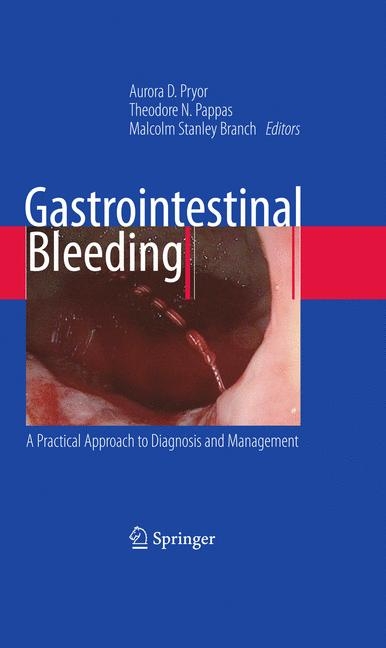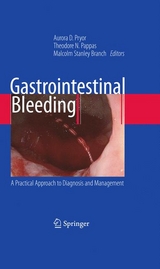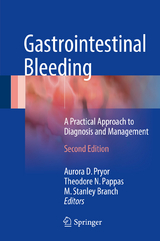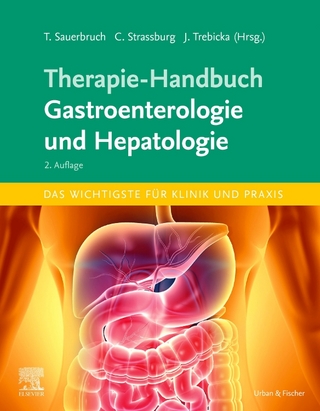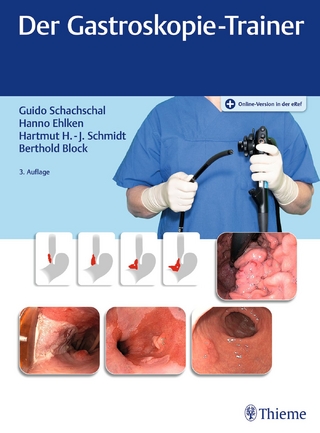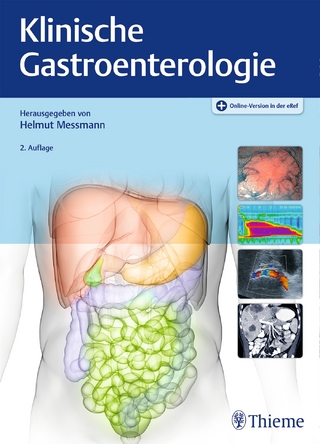Gastrointestinal Bleeding
Springer-Verlag New York Inc.
978-1-4419-1692-1 (ISBN)
- Titel erscheint in neuer Auflage
- Artikel merken
Gastrointestinal bleeding is an age-old problem. The original description of g- trointestinalbleedingmayhavebeenfromGalenandhisworkconnectingdyspepsia andmelanoticstool. Thechangesinourmanagementofgastrointestinalbleeding overthecenturieshavebeendrivenbynaturalalterationsinthespectrumofdiseases, expanding our understanding of these diseases and the never ending advances in technologyandpharmacologythathaveoccurredrelativetoGIdiseases. Academic interestingastrointestinalbleedingpeakedinthelasthalfofthetwentiethcentury withtheexpandingroleofsurgery,thediscoveryofacid-basedpepticulcerthe- pies,andtheriseof?exibleendoscopyandculminatedinthedescriptionofh. pylori as a causative agent for ulcer disease. More recently there has been a decrease incidenceinbleedingdiseasesofthegutandthereforeadecreasinginterestinthe scholarlywritingaboutthesediseases. Therehasnotbeenamajortextbookwritten aboutgutbleedinginover10yearsandthereforetheintentionofthistextbookisto ?llthatvoidbyprovidingareviewofacomprehensiveapproachtouppergut,mid, andlowergutbleeding. CliniciansatDukeUniversitywhohaveacommoninterestinthegastrointes- naltracthavecollaboratedintheconstructionofthistext.
Thisefforthasbrought together surgeons, gastroenterologists, and radiologists, to carefully chronicle the presentation, diagnosis, and management of modern day causes of gastrointes- nal bleeding. These co-authors concentrate on some of the latest innovations in the endoluminal and minimally invasive techniques that characterize the current approaches to these diseases. Emphasis has been placed on capsule endoscopy, double-balloon endoscopy, laparoscopic peptic ulcer surgery, and angiographic diagnosis and management techniques. The text has been written in such a way thatthereadercanquicklyreviewaspeci?ccauseofGIbleedingpriortomanaging ofsuchapatient. Weexpectthistextwillbeusedwiththesameimmediacyasthe diseasespresent. Wehopethatthistextprovidesafoundationforlearningformedicalstudents, interns,residents,andpractitionerswhoencounterthesecriticallyillanddif?cultto managepatients. Durham,NC,USA AuroraD. Pryor Durham,NC,USA TheodoreN. Pappas Durham,NC,USA MalcolmStanleyBranch v Acknowledgment TheeditorswouldliketothankMs. VirginiaCashforherhelpinthepreparation andcoordinationofthetext. vii Contents Part I Upper GI Bleeding Stabilization of Patients Presenting with Upper Gastrointestinal Bleeding.
..3 ErrolL. BushandMarkL. Shapiro Urgent Workup for Upper Gastrointestinal Bleeding...13 LorettaErhunmwunseeandSandhyaA. Lagoo-Deenadayalan Management of Esophageal Variceal Bleeding ...23 KekiBalsaraandLisaPickett Management of Dieulafoy's Lesions ...31 SerainaK. Faes,BrianR. Untch,ClaireEdwards,JohnTurner, MartinPoleski,andDouglasS. Tyler Management of Bleeding Peptic Ulcer Disease ...39 JamesC. PadussisandTheodoreN. Pappas Management of Unusual Sources of Upper GI Bleeding...65 ElisabethTracyandJanetTuttle-Newhall Mallory-Weiss Syndrome...79 JacobN. SchroderandMalcolmS. Branch Management of Bleeding Small Bowel Tumors...85 KeriE. LunsfordandAuroraD. Pryor Management of Bleeding from the Bile Duct ...103 CarlosE. MarroquinandBridgetM. Marroquin Management of Bleeding from the Pancreas...
Introduction Upper GI Bleeding Chapter 1. Stabilization of the Patient at Presentation (4 figures, B&W) Chapter 2 Urgent workup for upper gi bleeding (2-3 tables, 4-5 B&W images, 3 color photographs) Urgent upper endoscopy Urgent tagged red cell scan Urgent arteriogram for diagnosis Chapter 3 Management of bleeding esophageal varicies (1 table, 2 line drawings, 3 color and 3 B&W photographs) Chapter 4 Management of duilofoy (4-6 illustrations, 2 color photos) Chapter 5 Management of bleeding peptic ulcer disease (2 tables, 6-8 illustrations, 4 photographs) Chapter 6 Management of unusual upper sources of bleeding GAVE, aortoduodenal fistula, av malformation. Hemorrhagic gastritis, (3 illustrations, 3 photographs) Chapter 7 Management of Mallory Weiss tear (2 photographs, 2 illustrations) Chapter 8 Management of bleeding small bowel tumors (4 illustrations, 2 photographs) Chapter 9 Management of bleeding from the bile duct (4 illustrations, 2 B&W photos, 1 color photo) Chapter 10 Management of bleeding from the pancreas (2 illustrations, 2 B&W, 2 color photos) Lower GI Bleeding Chapter 11 Urgent work up of Lower GI bleeding (2-3 tables, 4-5 B&W images, 3 color photographs) Urgent colonoscope Urgent arteriogram for diagnosis Urgent tagged red cell scan Chapter 12 Management of bleeding hemorrhoids (4 illustrations, 4 photographs) Chapter 13 Management of bleeding colitis (4 photographs) Chapter 14 Management of av malformation of the colon (2 B&W photos, 2 color photos, 1 table) Chapter 15 Management of bleeding colon tumors (4 illustrations, 2 photos) GI Bleeding from an Unknown Source Chapter 16 Occult GI Bleeding: Evaluation of the Guaiac positive patient (5 figures, 2 tables, 2 color photographs) Chapter 17 Obscure GI Bleeding (2 figures, 2 tables, 5 color photographs) Capsule and Double Balloon Techniques Chapter 18 Provocative Angiography (1 figure, 1 table, 5 B&W photographs) Chapter 19 The unstable patient with obscure GI bleeding (1 table, 2 figures, 2 color photographs) Surgical and non-Surgical Management Index
| Zusatzinfo | 17 black & white tables, biography |
|---|---|
| Verlagsort | New York, NY |
| Sprache | englisch |
| Maße | 155 x 235 mm |
| Gewicht | 570 g |
| Themenwelt | Medizin / Pharmazie ► Medizinische Fachgebiete ► Chirurgie |
| Medizinische Fachgebiete ► Innere Medizin ► Gastroenterologie | |
| Medizinische Fachgebiete ► Radiologie / Bildgebende Verfahren ► Radiologie | |
| ISBN-10 | 1-4419-1692-X / 144191692X |
| ISBN-13 | 978-1-4419-1692-1 / 9781441916921 |
| Zustand | Neuware |
| Haben Sie eine Frage zum Produkt? |
aus dem Bereich
